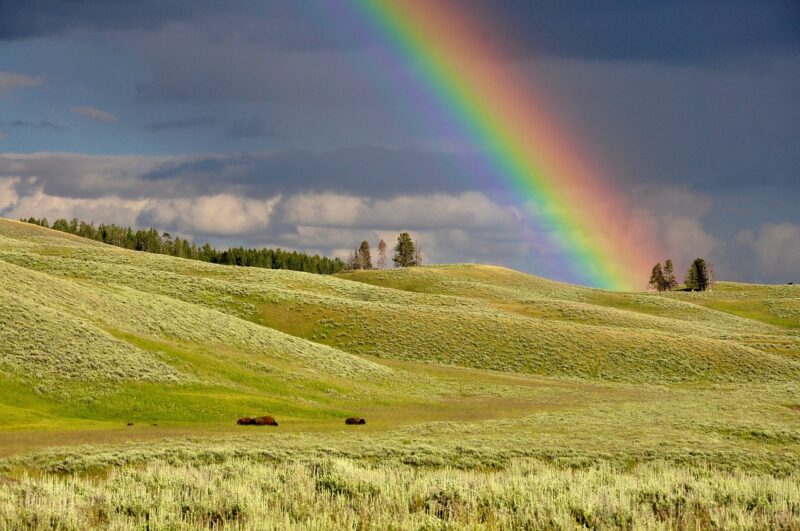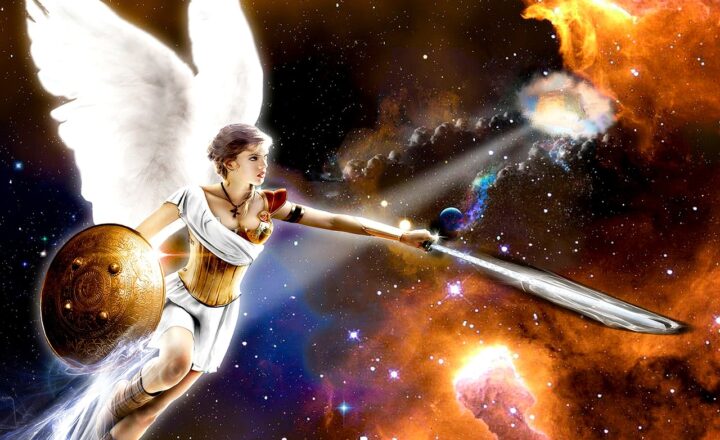How the Colors of the Rainbow Inspired Countless Myths and Stories
November 17, 2024

Rainbows have always captivated human imagination, with their vibrant colors stretching across the sky like a message from the divine. Each hue of the rainbow is imbued with significance, sparking legends, myths, and artistic inspiration throughout history. This article delves into how the colors of the rainbow have influenced various cultures, shaped religious narratives, and inspired countless stories across the ages.
1. The Science Behind the Rainbow
Understanding how a rainbow forms can enhance our appreciation for it within folklore and narratives. A rainbow typically appears when sunlight passes through raindrops, refracting into a spectrum of colors: red, orange, yellow, green, blue, indigo, and violet. These colors can be grouped into three primary color categories—warm, cool, and neutral—which evoke different feelings and associations:
- Warm Colors (Red, Orange, Yellow): These colors often symbolize energy, passion, and warmth. When depicted in myths, they frequently represent fire, love, and triumph.
- Cool Colors (Green, Blue, Indigo): These colors tend to evoke feelings of calmness, healing, and peace. In stories, they may represent nature or water elements, symbolizing tranquility and renewal.
- Violet (Neutral Color): This color often represents the mystical and the unknown, often associated with spirituality, transformation, and hidden knowledge.
As we explore various myths and stories inspired by these colors, we find that the meanings associated with them vary widely between cultures.
2. The Rainbow in Cultural Myths
Many myths and stories have been inspired by rainbows throughout history. Here are a few notable examples from different cultures:
2.1. The Rainbow in Norse Mythology
In Norse mythology, the rainbow is known as Bifröst, a bridge connecting the world of gods (Asgard) to that of humans (Midgard). It is depicted as a colorful, fiery bridge, and its colors symbolize the journey between the two realms. According to the myths, Bifröst is guarded by the god Heimdall, who watches over the passage and ensures that only the worthy may cross. This bridge connects mortals to divine intervention, illustrating the intertwining fate of humanity and the celestial.
2.2. The Rainbow in Native American Cultures
For many Native American tribes, the rainbow holds significant symbolism and narrative. For instance, the Navajo tribe sees the rainbow as a blessing, embodying harmony and balance. The Lakota speak of a rainbow as a promise of hope and peace, often associating it with the renewal of life following a storm. These stories emphasize the notion of rainbows as poignant reminders of resilience and the connection between Earth and the spirit world.
2.3. The Rainbow in Biblical Context
In Christianity, the rainbow is famed for its association with the story of Noah’s Ark. After the floodwaters receded, God used the rainbow as a symbol of His promise never to destroy the earth with a flood again. The colors of the rainbow in this context symbolize peace and hope amid chaos, making it a powerful representation of divine grace and protection.
3. Artistic Interpretation of Rainbows
The colors of the rainbow have not only been subjects of myths but also profoundly influenced art and literature. Artists and writers have sought to capture the beauty and symbolism of each color, using them to evoke specific emotions and themes.
3.1. The Color Red: Love and Passion
In art, red often symbolizes love and passion. From the famous painting “The Kiss” by Gustav Klimt to countless romantic literature pieces, the color red depicts intense emotions and experiences. Myths often create narratives around characters whose destinies are intertwined with the passion and fury represented by red.
3.2. The Color Green: Nature and Renewal
The color green represents growth, fertility, and connection to nature. In many stories, green is the color of rebirth, as seen in literature like “The Secret Garden” by Frances Hodgson Burnett. The stories often tie the renewal of life with the arrival of spring and the colors of a rainbow emerging after the rain.
3.3. The Color Blue: Calm and Peace
Blue has a long-standing association with peace and tranquility. Artists often use blue tones to depict oceans or skies, creating a sense of vastness and calmness. In literature, this color often represents the characters’ internal emotional landscapes, indicating clarity and reflection.
3.4. The Color Violet: Mystery and Spirituality
Violet captures mystery and spirituality, often appearing in stories where transformation occurs. Characters associated with violet hues often embark on journeys of self-discovery or face otherworldly challenges. From great literary works to contemporary art, the color violet continually represents the spiritual quest.
4. The Rainbow as a Cultural Unifier
Rainbows collectively inspire hope, renewal, and creativity across various cultures worldwide. Not only do they serve as a powerful motif in myths and stories, but rainbows also unite us through our shared experiences of marveling at nature. Major events in history have used the image of the rainbow to symbolize unity:
- 4.1. The LGBTQ+ Rainbow Flag: The rainbow has become a prominent symbol of LGBTQ+ pride and diversity. The colors represent the spectrum of human experiences, celebrating inclusivity and acceptance.
- 4.2. The Rainbow in Environmental Movements: Many environmental movements have adopted the rainbow symbol to advocate for diversity and harmony between people and nature, showcasing the beauty of the planet’s ecosystems.
The rainbow serves as a reminder that despite our differences, we all share the same landscape and that the vibrant colors of our existence add richness to life.
5. Conclusion: The Lasting Legacy of Rainbows
The colors of the rainbow have shaped countless myths and stories, offering insights into the human experience. From ancient mythologies to modern portrayals in art and literature, rainbows inspire hope, love, and renewal. As we continue to look to the skies after a storm, we are reminded that rainbows represent the endless potential of storytelling and the vital role that symbolism plays in connecting us to one another. Verily, the beauty of rainbows transcends cultures, bridging gaps and fostering understanding among diverse peoples for generations to come.
Each color of the rainbow is not merely an aesthetic beauty; each hue tells a part of humanity’s story, revealing the interwoven threads of our collective knowledge shaped by legends and experiences inspired by nature’s wonders.







